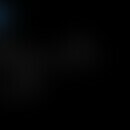Synonym(s)
DefinitionThis section has been translated automatically.
Ethylexyl triazone also called Octyltriazone, short EHT, a mixture of 8 isomeric chemical compounds, is a soluble organic UV-B filter. It absorbs UV-B rays from about 280 to 320 nm. According to EU Directive 76/786 EEC, the maximum concentration in formulations is 5 g per 100 g (ethyl triazone is 5 %).
Note(s)This section has been translated automatically.
Organic light protection filters are all those UV filters whose effect is not exclusively based on the inorganic, physically active substances titanium dioxide or zinc oxide. Organic, also known as chemical UV filters, are photoactive substances that are able to absorb light quanta in a certain wavelength range (ultraviolet radiation in the range of about 280 to 400 nm = ultraviolet radiation = UVB/UVA spectrum) and convert the energy released by this into infrared radiation. In this photosensitive process, the energy of the absorbed photon must correspond to the energy required to lift an electron in the molecule of the filter substance from a lower to a higher orbit. As the electron falls back to its original path, the absorbed energy is released either as heat or as radiation of longer wavelength.
In order to protect over the entire width of the wavelengths relevant to humans from 290 to 400 nm, several chemical filters with different absorption maxima are usually combined. With a suitable combination of organic and physical filters, the content of organic filters can be reduced while maintaining the same UV protection. This is desirable, since especially photounstable organic UV filters can cause phototoxic and photoallergic reactions depending on their concentration in the finished product.



